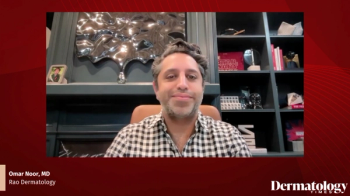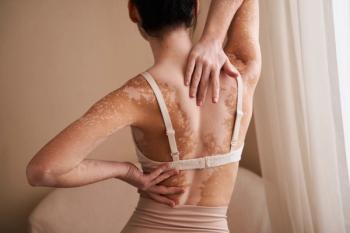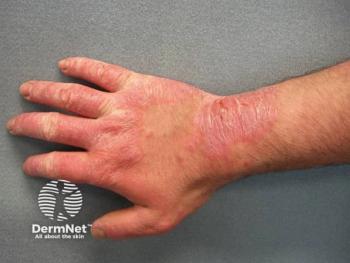
New Insights On the Link Between Comedogenic Cosmetics and Acne
Key Takeaways
- Facial cleansers, moisturizers, foundation, and powders are linked to increased acne risk, influenced by exposure, dosage, and ingredient types.
- Comedogenic ingredients in cleansers and moisturizers significantly contribute to acne development, with a dose-effect relationship observed.
The latest study reveals the link between cosmetic use and acne, highlighting the risks of comedogenic ingredients in moisturizers, facial cleansers, and powders.
New research from China has further investigated the relationship between cosmetic use and acne formation, confirming the concept of “acne cosmetica.”1 Researchers evaluated the cosmetic usage and exposure of patients with acne and found that facial cleansers, moisturizers, foundation, and powders were most associated with an increased risk of disease, dependent on the exposure, dosage, and types of ingredients. These findings support previous cross-sectional analyses indicating a positive correlation between frequent use of cosmetics and acne, particularly in female adolescents.2
Methods & Materials
The case-control study included 151 participants, 81 with acne and 70 without, who all used cosmetics and skin care products. Nearly 67% of patients were over the age of 25, with more students in the acne group than the control group. All were treated at the dermatology department of Sun Yat-sen Memorial Hospital, Sun Yat-sen University, between October 2022 and April 2023. The cosmetic usage, dosages, product names, and exposure of participants were evaluated through a self-administered questionnaire. The Standard Cosmetic Index (CEI) was utilized over the 28-day trial period.
Product Usage & Ingredient Breakdowns
Statistically significant differences between the 2 cohorts were identified. The acne group had higher CEI scores and rates of use for facial cleanser (OR: 3.59), foundation (OR: 2.13), and powders (OR: 2.86). The use of powders was independently associated with a 3.47 times higher risk of developing acne. (p = 0.02). This was determined after a further adjustment of confounding factors for age, occupation, parental history of acne, and milk consumption.
About 62% of patients with acne were using cleansers with comedogenic ingredients and 43.2% were using moisturizers with similar pore-clogging ingredients. This was much greater compared to the control group (40% and 27.1%, respectively). The risk of acne was 2.49 times higher in cleansers containing comedogenic ingredients than in those without. There was also a dose-effect relationship between the effects of cosmetic dose on acne development, particularly in higher usage levels of moisturizers.
“By analyzing the usage dosage of each type of cosmetic, [we] found that the dose of moisturizers used is an independent risk factor for the risk of acne, and the higher the dose of such products used, the higher the risk of acne,” the authors wrote.
In facial cleansers, anionic surfactants, lauric acid and stearic acid were the most predominant comedogenic ingredients, with a significant risk of irritating the skin and disrupting the barrier. Glyceryl stearate was the most frequently identified pore-clogging ingredient in moisturizers. However, this was less consistent than the acne incidence rates in cleansers.
Limitations
The use of a single center, the potential of recall bias, and the inability to stratify patients by level of acne severity may be considered limitations. It also excluded analysis of the combined effects of multiple concurrent cosmetic products, a common real-world scenario. These should be considered in future multicenter trials.
Prevention & Techniques
The study authors emphasized the need for cautious product selection, especially for acne-prone individuals. Recommendations include avoiding products with known comedogenic ingredients, using non-comedogenic formulations, and ensuring thorough removal of facial cleansers, particularly in retention-prone areas like the jawline. These protocols can “collectively address both product selection and application techniques to mitigate pore occlusion while maintaining skin barrier integrity,” according to the investigators.
References
1. Choi K, Liu H, Zhu Y, Jiang Z, Lu S. A Case-Control Study Exploring the Association Between Cosmetic Use and Acne Risk: Implications for Prevention and Clinical Practice. Clin Cosmet Investig Dermatol. 2025;18:1833-1843. Published 2025 Jul 31. doi:10.2147/CCID.S533950
2. Perera MPN, Peiris WMDM, Pathmanathan D, Mallawaarachchi S, Karunathilake IM. Relationship between acne vulgaris and cosmetic usage in Sri Lankan urban adolescent females. J Cosmet Dermatol. 2018;17(3):431-436. doi:10.1111/jocd.12431
Newsletter
Like what you’re reading? Subscribe to Dermatology Times for weekly updates on therapies, innovations, and real-world practice tips.



















